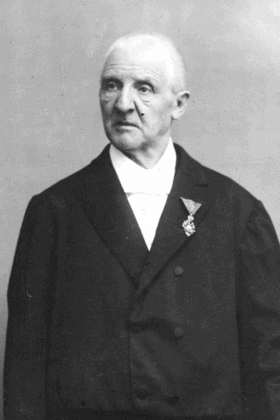
Anton Bruckner was a prominent Austrian composer and organist of the Romantic era. His compositions, particularly his symphonies and sacred choral works, are celebrated for their grandeur, emotional depth, and unique harmonic language.
Early Life and Education
Anton Bruckner was born in the small Austrian village of Ansfelden, near Linz, on September 4, 1824. He was the eldest of eleven siblings in a humble family. His father, Anton Bruckner Sr., was a schoolteacher and amateur musician who introduced young Anton to music. At a young age, Bruckner displayed exceptional musical talent, and his father recognized his potential. However, his childhood was marked by poverty and hardship.
Bruckner’s formal musical education began when he became a choirboy at the St. Florian Monastery, where he received training in singing, organ playing, and music theory. This experience had a profound influence on his later compositions, as he developed a deep connection to sacred music.
Early Career
After leaving the monastery, Bruckner pursued various musical positions as an organist and teacher, gaining experience in different towns throughout Austria. He continued to study composition and counterpoint with Simon Sechter, a respected music theorist. Despite facing criticism and rejection from some quarters due to his unconventional harmonic language, Bruckner was determined to refine his craft.
Compositional Style and Influences
Bruckner’s compositional style is characterized by its rich harmonies, monumental structures, and profound spirituality. He was heavily influenced by the works of Ludwig van Beethoven and Richard Wagner, whose innovative approaches to orchestration and harmony left a lasting impact on his music.
Major Compositions:
Symphony No. 3
Bruckner’s third symphony marked a turning point in his career, demonstrating his mature symphonic style with expansive structures and harmonic exploration.
Symphony No. 4
Perhaps his most famous, Symphony No. 4 showcases his mastery of orchestration and emotional depth, earning it the nickname “Romantic.”
Symphony No. 7
Symphony No. 7 is often considered one of Bruckner’s finest, known for its melodic beauty and profound spirituality.
Masses and Sacred Choral Works
Bruckner composed numerous masses and sacred choral works, including the Mass in D minor and the Te Deum, which reflect his deep religious faith and reverence for the Catholic Church.
Symphony No. 8
Bruckner’s eighth symphony is another monumental work, marked by its complexity and emotional intensity.
Challenges and Controversies
Throughout his career, Bruckner faced criticism and controversy, particularly from contemporary musicians and critics who did not understand or appreciate his harmonic language. His symphonies were often revised multiple times, as he sought to address these criticisms while maintaining the integrity of his artistic vision.
Legacy
Anton Bruckner’s music has since earned widespread recognition and admiration. His symphonies, in particular, are revered for their grandeur and innovation, influencing subsequent composers such as Gustav Mahler and Richard Strauss. Bruckner’s compositions continue to be performed and recorded by orchestras worldwide, cementing his legacy as a key figure in the Romantic era of classical music.
Anton Bruckner’s life and works exemplify the struggles and triumphs of a dedicated and visionary composer. His devotion to his art, his unwavering faith, and his commitment to pushing the boundaries of classical music have left an indelible mark on the world of orchestral and sacred choral composition. Bruckner’s symphonies, in particular, stand as towering achievements in the Romantic repertoire, ensuring his enduring legacy as a master of musical expression and innovation.
